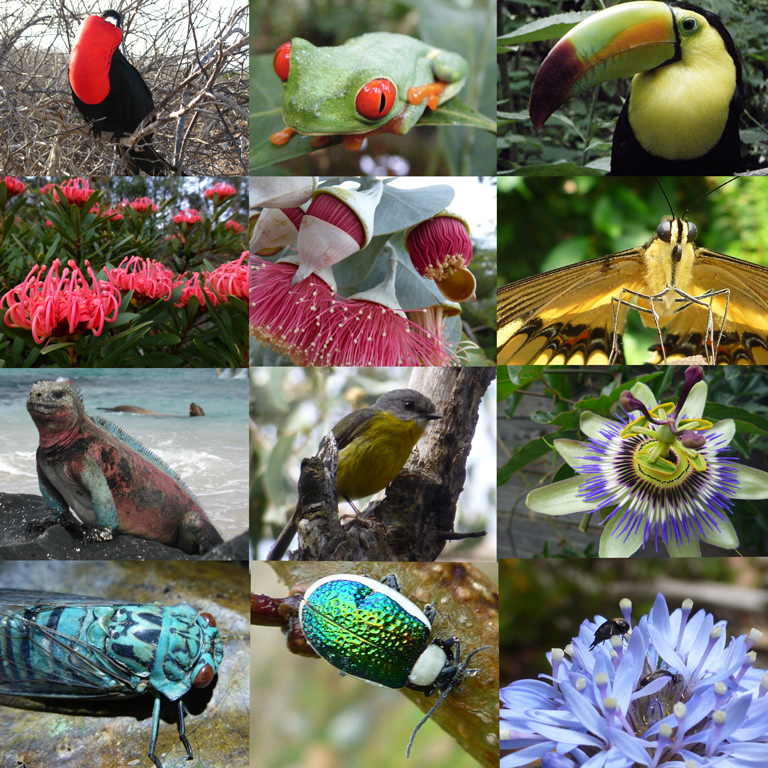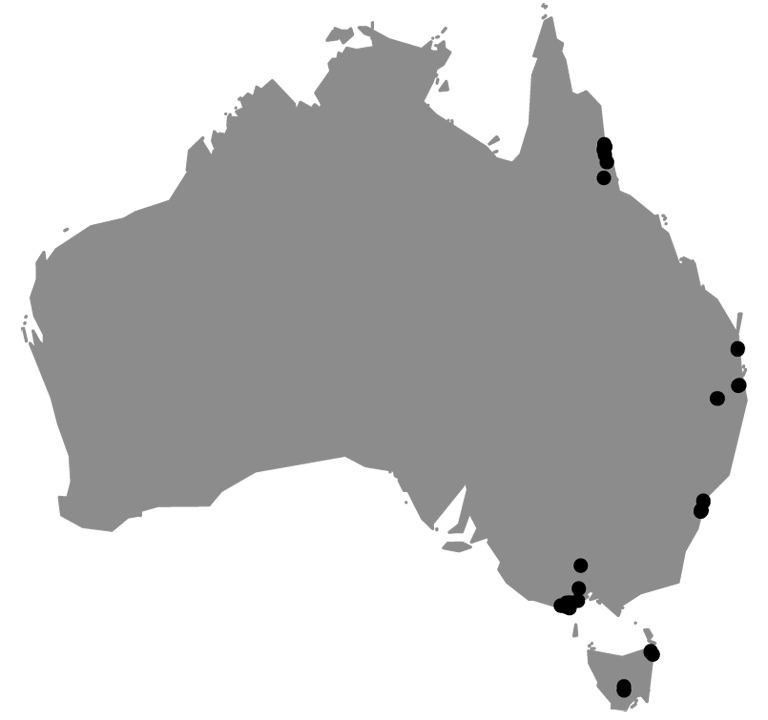- Scientists have commonly believed life is more colorful in the tropics.
- A study tested that assumption by measuring color properties in hundreds of species of butterflies, birds, and flowers spanning many latitudes in eastern Australia.
- The most vivid organisms dwelled in temperate regions instead of tropical ones, but whether that’s true elsewhere is still up for debate.
Visitors to the tropics remember the bright colors. Take the blue-and-yellow macaw with its egg-yolk breast and turquoise back – “the usual gaudy colouring of the intertropical productions,” as Charles Darwin put it. But recent research in the journal Global Ecology and Biogeography contests the idea that wildlife and flowers in the tropics are more colorful than those in temperate climes. They may, in fact, be blander.
People, including scientists, have a bias for “thinking that tropical regions are filled with really vibrant and exuberantly colorful things,” said lead author Rhiannon Dalrymple, who completed the study at the University of New South Wales in Australia. “But there’s never been any strong test of the idea.”
To assess how colors change from one place to the next, researchers have relied on evaluating the hues of specimens by eye. But for the first time, Rhiannon and colleagues applied an objective lens: measuring color with instruments. The approach also allowed them to capture wavelengths of light, such as ultraviolet, that are invisible to people but apparent to bees, birds, and other animals.
The researchers amassed species and subspecies of a wider breadth of flora and fauna than in any previous study about color: museum specimens of 424 kinds of butterflies and 570 kinds of birds, as well as 339 kinds of freshly collected flowers. Spanning 34.5 degrees of latitude in eastern Australia, the samples hailed from tropical rainforest to heathland. The researchers looked at how the average of different properties – like color diversity and saturation – changed across latitudes.


Their results upended conventional thought. Organisms either weren’t changing or were becoming slightly more colorful the farther they lived from the equator. Even the most vibrant specimens were not tropical, the team noted.
“It’s a pretty damning piece of evidence” against the assumption that the tropics are universally more colorful, said Dalrymple. Their surprising mediocrity, she thinks, suggests that many tropical denizens may develop colors that help camouflage them, rather than draw attention.
Yet other researchers question whether the trend applies outside Australia.
“I think that they may be blowing their own trumpet a bit too hard,” biogeographer Jonathan Adams of Seoul National University in South Korea told Mongabay.
In a 2014 study, Adams and his colleagues had analyzed 247 butterfly species from tropical Ecuador, subtropical Florida, and temperate Maine. In contrast to the current study, their results supported the paradigm of increasing color nearer the equator. Unlike his study locations, he said, Australia lacks the constantly warm and wet tropics and the “long frozen winters and chilly summers of the outer latitudes” – conditions that he believes are necessary to test whether the tropics are more visually arresting.

Dalrymple countered that the findings in Australian latitudes should not be considered an exception to the rule. Moreover, her study represents “the strongest piece of evidence we have so far” for a global pattern, she believes, because of the work’s unbiased measurement and thorough sampling.
Both Adams and Dalrymple concur, however, that scientists must analyze the color on more continents before the issue is settled.
Evolutionary biologist David Lohman of City College of New York offered a different perspective: perhaps “colorful organisms are disproportionately common,” he told Mongabay. Dalrymple’s study counted all species and subspecies equally, but explorers might assume the tropics are more vivid because they keep tripping over the same few flashy residents, Lohman proposed.
Rather than dimming denizens of the tropics, the study highlights the vibrancy of temperate latitudes, according to Dalrymple. She now lives in Minnesota and works at Hamline University. “There are cardinals, blue jays, and yellow gold-finches,” she said. Flitting in the temperate zones are “beautiful birds if we care to open our eyes and have a look.”


Citation:
Dalrymple, R., Kemp, D., Flores-Moreno, H., Laffan, S., White, T., Hemmings, F., Tindall, M., Moles, A. (2015). Birds, butterflies and flowers in the tropics are not more colourful than those at higher latitudes. Global Ecology and Biogeography, 24(12), 1424-1432.
Alison F. Takemura is a graduate student in the Science Communication Program at the University of California, Santa Cruz. Other Mongabay stories produced by UCSC students can be found here
Correction 12/2/2015: Jonathan Adams’s affiliation was originally listed as Seoul University instead of Seoul National University.
